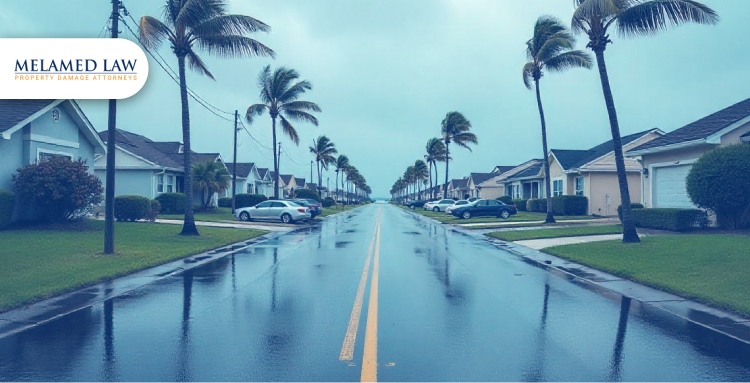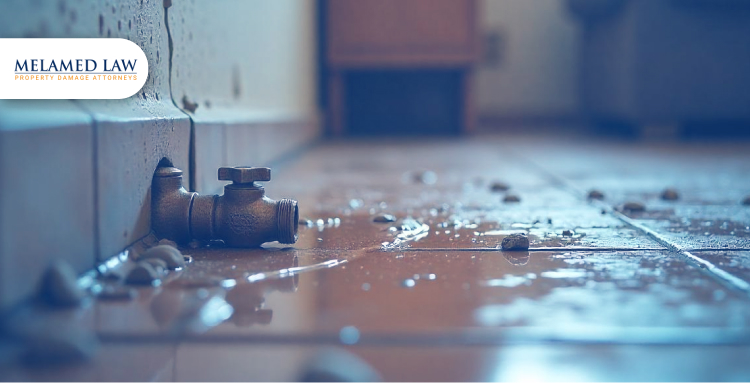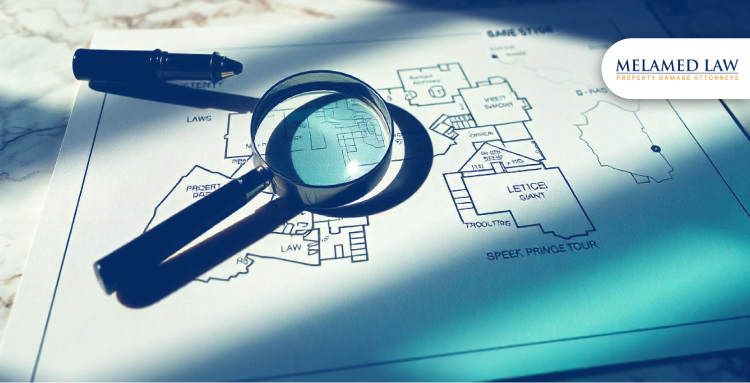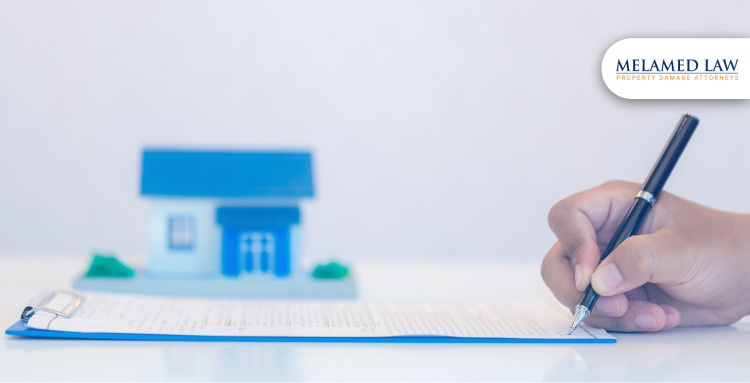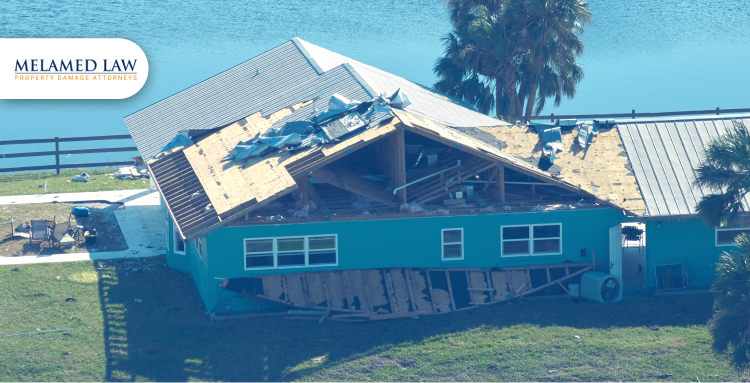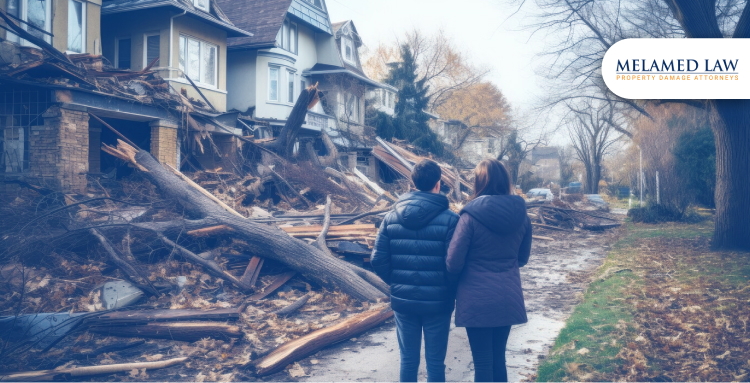
How to File a Property Damage Insurance Claim in Florida
When the unexpected happens, we help individuals and businesses collect the money they deserve for their insurance claims.
Property Damage
December 29, 2024
How to File a Property Damage Insurance Claim in Florida
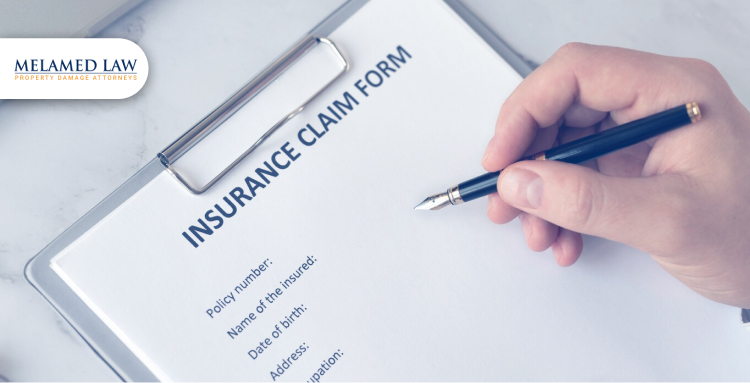
Property damage can strike when you least expect it, leaving you feeling vulnerable and anxious. Whether resulting from a sudden accident, unexpected flooding, or structural issues, understanding how to file a property damage insurance claim is vital for protecting your interests. In Florida, the claims process can appear daunting, but grasping the necessary steps can significantly influence your ability to secure the compensation you rightfully deserve.
By filing your claim accurately, you can alleviate some of the stress and focus on what truly matters—restoring your property to its former condition. Let’s take a closer look at the essential steps to follow when filing a property damage insurance claim in Florida, ensuring you are well-prepared for any situation that may arise.
(1) Assessing Property Damage: Your First Step
When dealing with property damage, whether from hurricanes or structural failures, the first step is always to prioritize safety. Before entering the premises, take a moment to assess the situation—look for hazards such as unstable structures, downed power lines, or gas leaks. Your well-being is the most important thing to consider.
Once it’s safe to proceed, it’s time to document the damage thoroughly. Use your smartphone or camera to capture detailed photos and videos from various angles. This visual evidence is crucial for your insurance claim, as it helps illustrate the extent of the loss to your insurer.
If there are immediate risks of further damage—like a broken window or a leaking roof—take action to make temporary repairs. Use tarps or plywood to cover openings and prevent water intrusion, and don’t forget to keep all receipts for any materials purchased. These expenses can often be reimbursed as part of your claim, so it’s essential to maintain clear records.
(2) Review Your Insurance Policy Before Filing

Once you’ve assessed the damage, the next step is to carefully review your insurance policy. Understanding your coverage limits is crucial—this is your first line of defense in securing the compensation you need. Take the time to identify exactly what types of damage are covered under your policy. Common coverage areas include water damage, fire damage, and structural issues, but each policy can vary significantly. Knowing what is included will help you gauge your options and prepare for the claims process.
Next, it’s essential to identify any deductibles you’ll need to meet. A deductible is the amount you must pay out-of-pocket before your insurance kicks in, and it can vary depending on the type of damage and your specific policy. Being aware of your deductibles upfront will help you plan for the financial implications of your claim.
Lastly, check for any time limits associated with reporting claims. Many insurance policies have strict deadlines for filing a claim after an incident occurs. Missing these deadlines can jeopardize your ability to receive compensation, so it’s vital to be proactive.
(3) How to Report Your Claim Quickly
Once you’ve assessed the damage and reviewed your insurance policy, it’s time to report your claim promptly. Acting quickly can make a significant difference in the outcome of your case. Here’s how to get started:
Contact your insurer: First, contact your insurer. Most insurance companies provide various methods to file a claim—whether through their app, website, or customer service hotline. Many insurers now offer user-friendly digital platforms that allow you to submit your claim swiftly and easily, eliminating the need to wait on hold or contend with complicated paperwork.
Provide accurate information: When you’re filing your claim, it’s important to provide clear, accurate information about the incident and the damage. Make sure you include key details, such as:
The date and time the incident happened
What kind of damage you’re dealing with—whether it’s water, fire, or structural
Any circumstances that contributed to the damage or might be important for the insurer to know
Get a claim number: After submitting your claim, be sure to receive and save your claim number. This unique identifier will be essential for tracking the status of your claim and referencing your case in future communications with your insurer.
(4) Legal Requirements for Reporting Claims in Florida
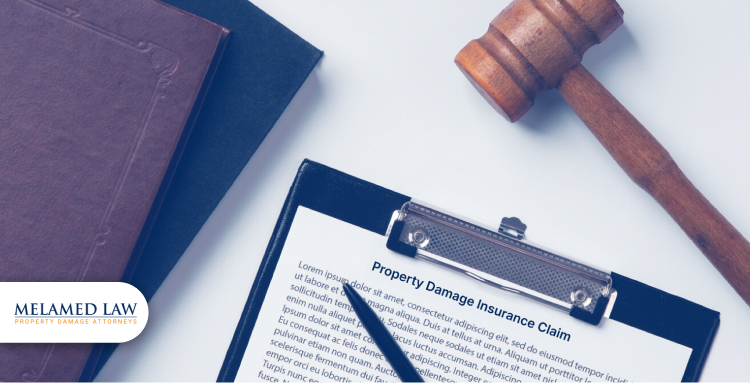
When you’re reporting your property damage insurance claim in Florida, it’s crucial to adhere to the guidelines established by state law to ensure everything runs smoothly. According to Florida Statutes Section 627.70131, insurers are required to acknowledge receipt of a claim within 14 days, unless payment is made within that time frame. Moreover, once the insurer receives your complete proof of loss statement, they must promptly initiate an investigation unless unforeseen circumstances prevent them from doing so.
Additionally, the Homeowner Claims Bill of Rights stipulates that insurers must confirm the status of your claim—whether it’s fully covered, partially covered, denied, or still under investigation—within 30 days after receiving your complete proof of loss, provided you request this confirmation in writing. Florida law also mandates that insurers either pay or deny your claim within 90 days of receiving your notice, unless external factors cause a delay. If payments are delayed beyond this timeframe without a valid reason, the insurer must pay interest on the amount owed from the date you filed your claim.
(5) What to Expect During the Adjuster's Inspection
Once you’ve reported your claim, the next step is to schedule an inspection with your insurance adjuster. This is a critical phase in the claims process, as the adjuster will assess the damage and determine the compensation you’re entitled to. Here’s how to prepare:
Prepare for the visit:
Before the adjuster arrives, gather all relevant documentation to support your claim. This includes:
Photos and videos showing the damage from different angles—more evidence is always better.
Receipts for any temporary repairs you made, like patching a leak or boarding up windows.
A list of damaged items with their estimated value, so you have everything accounted for.
Point out all damage:
During the inspection, walk through the property with the adjuster and ensure that every issue is highlighted. Don’t hesitate to point out any details you feel are significant, including hidden damage that might not be immediately visible. Your thoroughness will help the adjuster get a complete understanding of the situation.
Consider a public adjuster:
If the damage is extensive, or if you’re worried the insurer’s adjuster might not give you a fair evaluation, you might want to bring in a public adjuster. These professionals work for you, not the insurance company. They know how to interpret policy language, spot overlooked damage, and fight for an accurate payout. Having a public adjuster on your side can make a big difference, especially if the insurance company’s initial offer doesn’t reflect the true cost of repairs.
(6) Keeping Track of Your Claim and Expenses

Maintaining accurate records throughout the claims process is essential for ensuring a smooth experience and securing the compensation. Here are key steps to follow:
Track communication:
Keep a detailed log of all interactions with your insurer. This should include dates, names of representatives you spoke with, and notes about what was discussed. Having this information on hand can be invaluable if you need to reference past conversations or escalate your claim.
Document expenses:
As you navigate the claims process, be diligent about documenting any expenses related to the damage. This includes keeping receipts for temporary repairs, such as tarps or boarding up windows, as well as any additional costs you incur, like accommodation if your home is uninhabitable. These records will support your claim for reimbursement.
Follow up regularly:
Don’t wait passively for updates on your claim. Stay proactive by regularly checking in with your insurer to inquire about the status of your claim. If you notice any delays or lack of communication, don’t hesitate to ask for clarification or escalate the issue to ensure your claim is processed in a timely manner.
(7) How to Review and Negotiate Your Settlement Offer
After your claim has been assessed, your insurer will present a settlement offer. It's crucial to take a close look at this offer to ensure it meets your needs.
Evaluate the offer:
Begin by carefully reviewing the details of the settlement. Make sure the amount offered adequately covers all damages, including repair costs, temporary housing, and any other related expenses. Compare the offer against your documentation and estimates from contractors to determine if it aligns with the true cost of the damages.
Negotiate if necessary:
If the initial offer seems insufficient, don’t hesitate to negotiate. Insurers often expect some back-and-forth, and presenting solid evidence—like repair estimates or independent appraisals—can strengthen your position. Be assertive in communicating your needs and don’t accept the first offer if it doesn’t reflect the true extent of your damages.
(8) Closing Your Claim and Making Repairs

Once you’ve reached an agreement with your insurer, it’s time to focus on receiving your payment and making the necessary repairs to your property.
Understand payment terms:
Familiarize yourself with the payment process detailed in your settlement. Payments may be issued in installments or as a lump sum, depending on the insurer’s policies and the specifics of your claim. Understanding how and when you will receive funds can assist you in managing your budget and planning for necessary repairs.
Hire licensed contractors:
When it’s time to make permanent repairs, ensure you hire licensed and reputable contractors. Research potential contractors by checking reviews, verifying licenses, and asking for estimates. Using qualified professionals not only ensures the repairs are done correctly but also prevents future issues that could arise from subpar workmanship.
Finalize the claim:
After all repairs are completed, notify your insurer to officially close the claim. This step is important for ensuring that all obligations are fulfilled and that you have a documented record of the repairs made. Keeping clear communication with your insurer during this phase will solidify your successful claims experience.
How Melamed Law Can Help You with Your Claim
At Melamed Law, we understand just how frustrating and stressful the property damage claims process can be. Whether it’s dealing with delayed responses, denied claims, or low settlement offers, we know these challenges can leave you feeling numb. That’s why our team is here—to guide you through every step and make sure you get the outcome.
If your claim is denied or the insurer’s offer doesn’t reflect the true value of your damages, we’ll step in and fight on your behalf. We’re experienced in filing appeals, negotiating settlements, and making sure that every aspect of your damage is fairly assessed. Your concerns won’t get overlooked—we’ll ensure that your voice is heard and your claim is taken seriously.
Insurance companies can be tough, but we know the system inside and out—and we won’t let them take advantage of you. Contact Melamed Law today and let us assist you in restoring your property to its rightful condition.
Recent Cases

